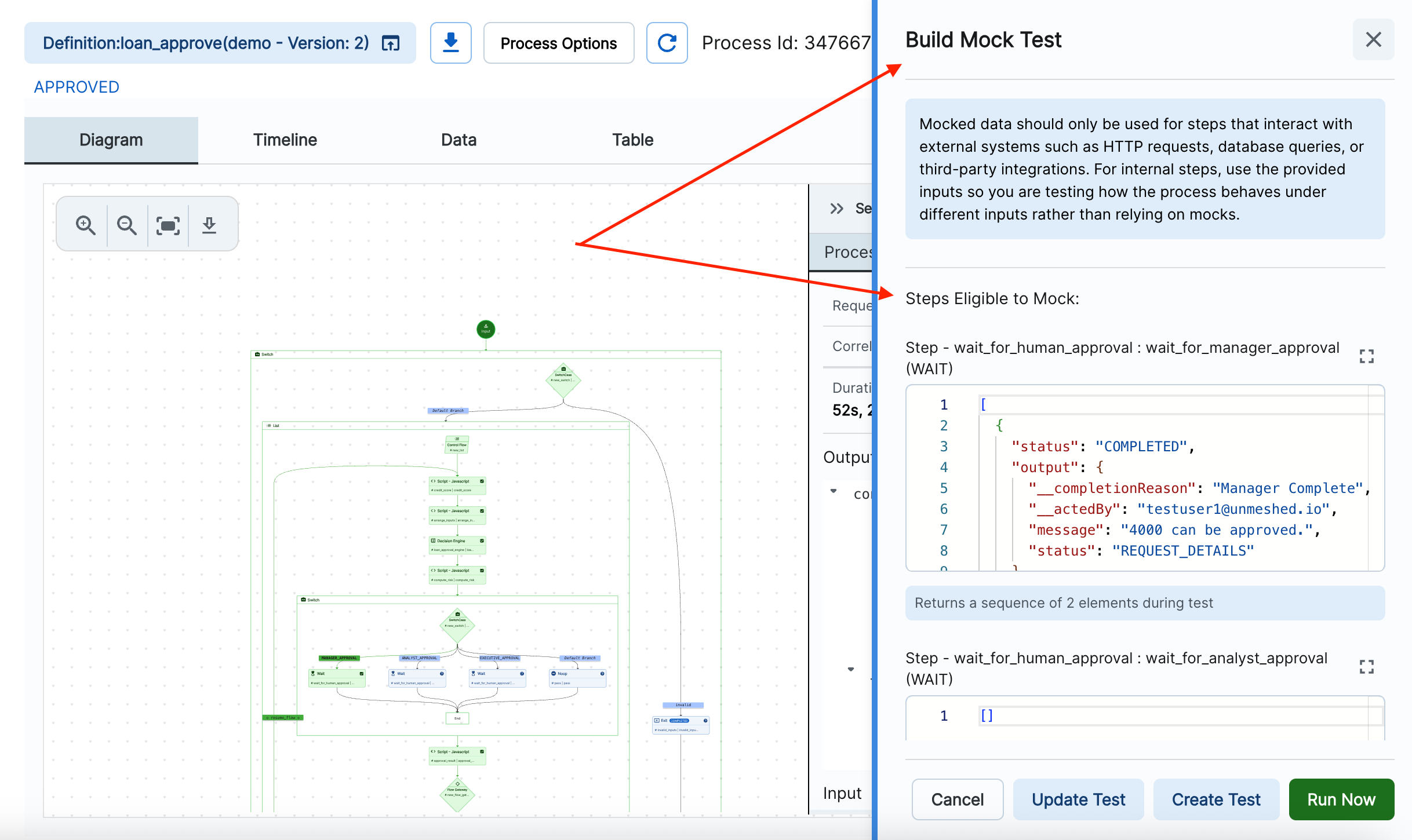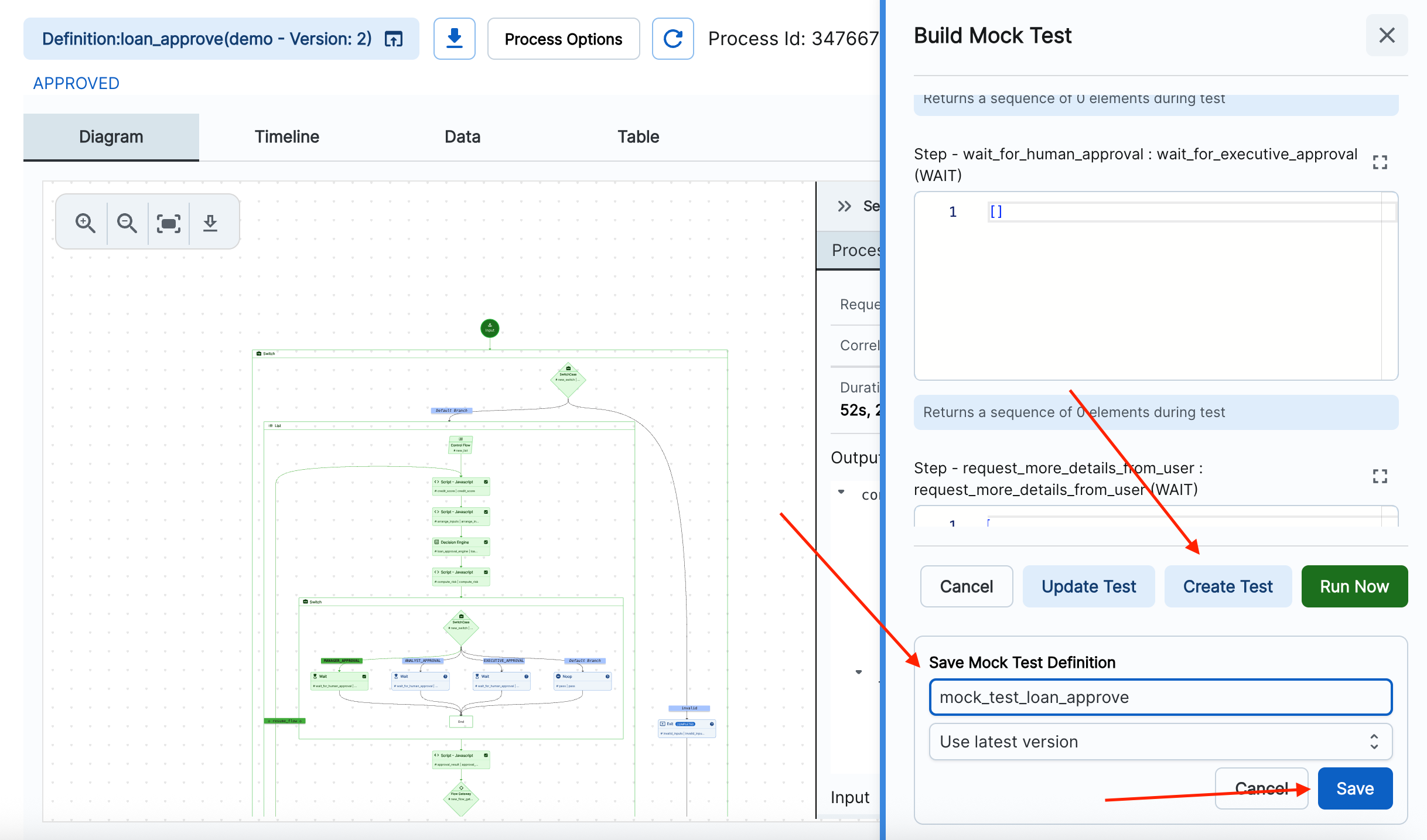How To Guide
Creating Mock Test Cases in Unmeshed Using Existing Executions
Overview
This guide explains how to create mock test cases in Unmeshed using data from existing process executions.
1. Select the Process Definition
- Navigate to the Process Definition for which you want to create a mock test.
- Click View → View Executions.
- If no executions are found, expand your time range using the From Time filter.
2. Open the Process Execution View
Once you open an execution, you will enter the Process Execution View.
On the top-right corner, you will find the Build Mock Test button.

Click the button to continue.
3. Build Mock Test Screen
A sub‑screen will open to help you construct the mock test.

This screen displays Steps eligible for mocking. For each step, you will see sample responses captured from the actual execution.
4. Configure Mock Responses
For every eligible step:
- Review the output captured during the real process run.
- Configure the mock response you want the test to use.

During mock test execution, Unmeshed will replace the real step output with the mock response provided here—allowing you to replicate real behavior without calling external systems.
5. Create the Mock Test
On the bottom-right of the screen, click the Create Test button.
You will be prompted to edit a Mock Process Definition Name, which will be used to create a test case derived from the selected process definition.

Once you click Save:
- A new process definition will be generated as a mock test.
- When you run this new process, all steps will be mocked using the values you configured in the mock input screen.
This allows you to fully replicate the behavior of the original process definition without invoking actual systems.
Summary
Using this feature, you can quickly generate reliable, repeatable mock test cases based on real execution data. This ensures accurate testing without exposing production data or invoking actual services.